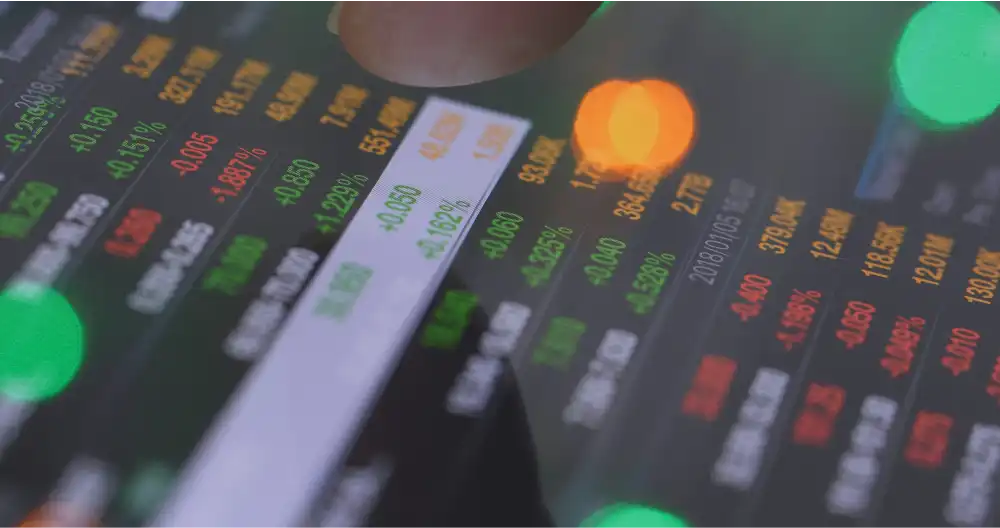
Q1 2025
The first quarter of 2025 began with a complex mix of optimism and volatility across global markets, driven by diverging economic signals, evolving monetary policy, and heightened geopolitical tensions. Equities broadly advanced, especially in the US and parts of Asia, as investors grew more confident in the resilience of consumer spending and the prospect of lower interest rates later in the year. However, volatility remained pronounced, particularly in Europe and emerging markets, where inflationary pressures and political uncertainty weighed on investor sentiment.
In the United States, equity markets posted strong gains during Q1, with the S&P 500 and Nasdaq reaching new highs in March. Market optimism was buoyed by a string of robust corporate earnings, particularly from the technology and consumer discretionary sectors, and renewed confidence in the Federal Reserve's ability to engineer a soft landing. While the Fed left rates unchanged throughout the quarter, comments from Chair Jerome Powell suggested growing openness to rate cuts in the second half of 2025, contingent on continued moderation in inflation data. Core inflation showed signs of easing, but remained above the Fed's 2% target, keeping policymakers cautious.
European markets experienced more mixed performance. The Euro Stoxx 50 ended the quarter marginally higher, as gains in industrials and energy were offset by sluggish consumer sectors and banking volatility in certain regions. The European Central Bank maintained its cautious stance, holding rates steady amid persistent inflation in southern Europe and signs of economic stagnation in Germany and France. The energy transition remained a key driver of European equity rotation, with increased focus on renewables and industrial decarbonization efforts attracting new capital flows, despite ongoing policy debates in Brussels.
Asia-Pacific markets were driven by divergent macroeconomic narratives. Japanese equities surged to multi-decade highs, with the Nikkei 225 climbing over 12% in the quarter, bolstered by a weaker yen, strong foreign inflows, and corporate governance reforms. Meanwhile, China's markets struggled to gain sustained traction, despite repeated stimulus measures from Beijing. Concerns over real estate sector weakness, deflationary pressures, and slower-than-expected domestic consumption weighed on investor confidence. The People's Bank of China cut key policy rates in February, but markets responded tepidly, awaiting more aggressive fiscal coordination.
In contrast, Indian markets continued to perform strongly, extending their multi-year bull run. The Nifty 50 and Sensex saw gains supported by steady economic growth, increased foreign direct investment, and optimistic projections ahead of the national elections later in the year. Sectors such as infrastructure, financials, and consumer goods attracted significant domestic and foreign capital. Elsewhere in Southeast Asia, markets were broadly flat to positive, though capital flows remained sensitive to US dollar strength and global trade dynamics.
Commodities delivered varied performance across categories. Crude oil prices rose modestly, with Brent settling above $87 per barrel by the end of March, amid supply disruptions in the Middle East and renewed OPEC+ production discipline. Gold reached a record high above $2,200 per ounce in March, as demand for safe-haven assets surged in response to geopolitical uncertainty, particularly related to Ukraine and renewed tensions in the Taiwan Strait. Industrial metals such as copper and nickel experienced renewed interest, reflecting expectations of rising global demand linked to green energy infrastructure.
Currency markets were shaped by central bank expectations and geopolitical developments. The US dollar remained broadly firm against most major currencies, though it softened slightly against the Japanese yen and British pound toward quarter-end as traders began pricing in a potential Fed rate cut by summer. The euro was range-bound, while emerging market currencies were mixed, with Latin American units outperforming those in Eastern Europe and Asia, where capital flight risk remained elevated.
Fixed income markets saw renewed investor interest, particularly in longer-dated sovereign bonds, as expectations for future rate cuts firmed. US Treasuries rallied moderately, and yield curves began to steepen slightly from their deeply inverted levels. European bond markets were more cautious, reflecting divergent inflation trajectories and continued fiscal uncertainty. Credit spreads narrowed in the investment grade space, while high-yield issuers saw selective inflows, particularly in the US and India.
Overall, Q1 2025 closed with an undertone of cautious optimism. While major economies appear to be navigating the path toward stable growth and gradually moderating inflation, markets remain highly sensitive to policy shifts and geopolitical developments. Investors are watching closely for more decisive signals from central banks, clarity on fiscal trajectories, and resolution in global conflict zones as they recalibrate their strategies for the remainder of the year.
